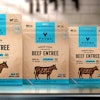The pet food and pet care industries owe their continued growth largely to the humanization of pets and premiumization of products over the last decade or so, especially in developed markets. But, is there a ceiling to premiumization, especially in terms of how much pet owners are able and willing to pay for pet foods?
“For more than a decade, the strategy of converting pet shoppers to higher-priced fare has paid off handsomely,” wrote David Lummis of Packaged Facts in the May issue of Pet Product News International. “But this old news is a tack that depends on the success of upper-echelon, higher-income, better-educated consumers able to understand and afford the nuances of themes such as ‘ancestral.’
“Only about 10% of pet shoppers fall into a decidedly affluent category, so with its tenure this strategy is now largely one of robbing Peter to pay Paul rather than creating real market growth. Constantly tailoring this approach to woo shoppers at all income levels is essential to its ongoing viability.”
Indeed, Lummis’ colleague, David Sprinkle, research director for Packaged Facts, has presented data showing that, among US pet owners who strongly agree that pets are part of their family—a full 56% in a consumer survey conducted by the research firm earlier this year (more than double the 27% who said they “somewhat agree” their pets are part of the family)—43% also strongly agree that they enjoy buying products that pamper their pets.
Yet, “it’s the pet pamperers who are disproportionately demanding higher quality in pet foods and supplies without, in equal measure, loosening up their purse strings. Among those consumers who strongly agree that their pet is part of the family, 44% strongly agree that they look out for lower prices, special offers and sales on pet products,” Sprinkle wrote.
As pet food manufacturers and marketers continually (and admirably) innovate and bring new types of products to market, answering the demands for humanization with locally sourced ingredients, whole foods, “superfoods,” new processing methods and the like, the prices of those products naturally continue to rise because they cost more to make. The concern is, will even pet pamperers continue to pay those prices?
“We seem to be approaching the point where we are testing the limits of what we can do with new formulas, novel ingredients, etc., and still be at a price point palatable to the consumer,” commented Jeremy Petersen, executive vice president of Wild Calling Pet Foods, in an article in Pet Nutrition News (a spring supplement to Pet Product News). “Companies that are innovative and offer products at a price that consumers can find value in will be able to achieve higher prices, but the rate of price appreciation will be far less than in the past.”
Value is a good concept to focus on; it seems that since the Great Recession, even affluent consumers are seeking what they perceive as good value in everything they buy, including for their beloved pets. The trick is figuring out their perception of value and, more importantly, communicating the value of your products thoroughly and transparently.
And, as the demographics of pet owners change, conveying good value becomes even more essential. Millennials are starting to overtake Baby Boomers as the largest group of pet owners, at least in the US. Considering that these consumers came of age during the recession, value is often top of mind.
While Millennial pet owners may be even more inclined to pamper their pets than pet owners in general—GfK data shows that 63% agree pets should be pampered—they are also much more likely to switch brands to use a coupon (and to switch brands for the sake of variety and novelty) than are Boomers or even Gen X owners. Maria Lange of GfK also commented during Petfood Forum 2015 that Millennials, because they are “always looking for value for their hard-earned money,” may be open to trying private label pet foods, especially as those reach premium and even superpremium levels.
At Petfood Forum, Lange presented data indicating that in the US pet specialty retail channel, the price per pound of private label pet food has been rising at twice the rate of branded pet food, 41% vs. 22%. Specifically, in 2011, private label pet food cost an average of US$1.22 per pound, while branded pet foods averaged US$1.81. In 2014, those figures were US$1.71 and US$2.22, respectively.
To combat this, as well as head off the potential that even the most pampering pet owners might have a ceiling for how much they’re willing to pay for pet food, some pet food manufacturers are launching lines at more appealing price points but also hitting at least most of the hot buttons today’s consumers are seeking, such as natural, grain-free, “wholesome” ingredients and novel proteins.
“Millennials are set to control spending and Hispanics or other minority populations comprise the fastest growing population of purchasers, so we are likely to see drastic shifts in purchase behaviors over the next three to seven years,” Petersen of Wild Calling said. “To appeal to the broad spectrum of consumers, I predict companies will have to assess their entire business, especially product offerings in lower-priced categories. There will always be a strong appetite for high-end, luxury foods, but the growth is tapering.”
To that end, Wild Calling launched Xotic Essentials at Global Pet Expo this year, which Petersen characterized as being “affordably priced at around US$55 for 25 pounds and will offer excellent formulas to promote the overall health and wellness of pets.” Similarly, Midwestern Pet Foods introduced Sportmix Wholesomes, an “economy natural line” of pet foods.
These are just two examples of what might soon be a growing trend. I remember a longtime pet food industry professional remarking to me earlier this year, “Not everyone can afford to pay US$60-70 for a bag of dog food.” I would add that, even among pet owners who can afford it, not everyone is willing to pay that much—worth keeping in mind to keep the industry growing strong.


















